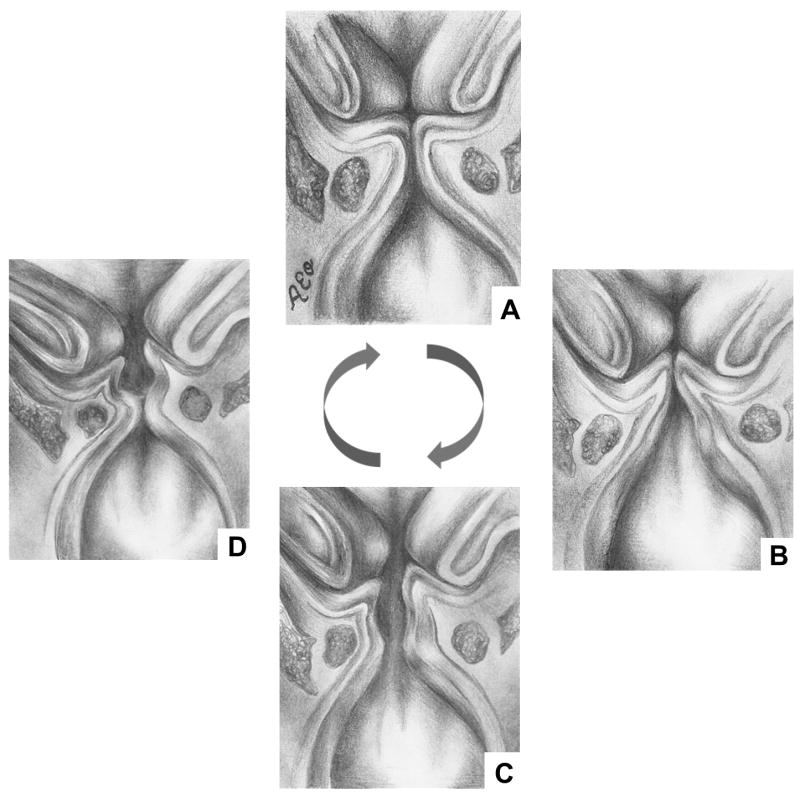Figure 1.
Diagram of mucosal wave. 1. Vocal folds in closed position. 2. Air pressure column from lungs forces bottom of vibrating vocal folds to open. 3. Air pressure column continues to flow through, opening top of vocal folds. 4. “Bernouli effect” produced by air pressure column leads to closure of bottom of vocal folds. 1. Top of vocal folds also closes, and air pressure column is released through top; column converts to sound and is released as voice.

